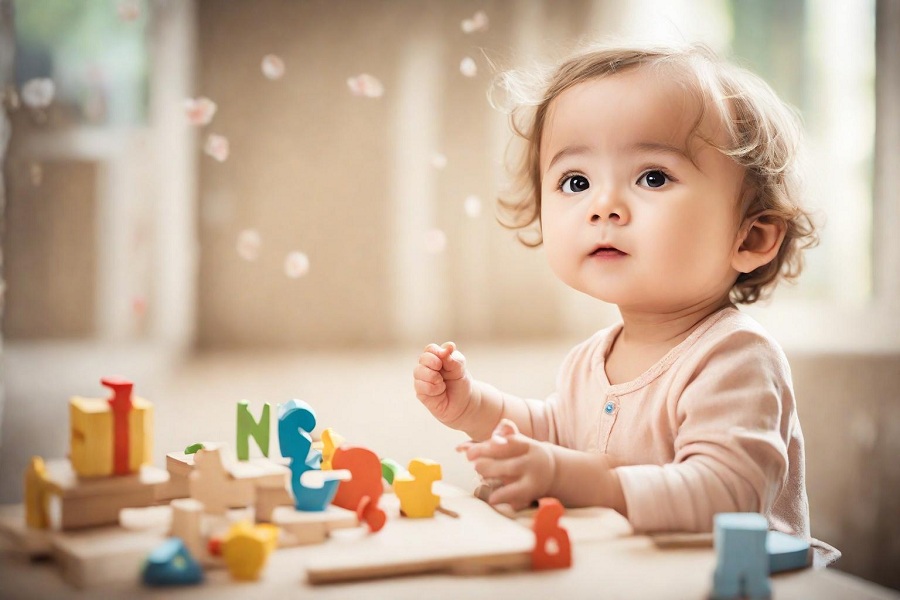In the vast expanse of human development, the ability to communicate distinctly sets us apart. Language, a pillar of this communication, not only bridges our thoughts to the world but also intricately intertwines with the development of our cognitive abilities. Interestingly, homes reverberating with the echoes of more than one language offer a fascinating playground for the youngest of minds. It is within these bilingual environments that infants, as young as four months, begin demonstrating unique patterns of brain activation, starkly different from their monolingual counterparts. This article unravels the mysteries of these early developments, painting a picture that is as enlightening as it is wondrous.
A Prelude to Bilingual Brilliance
Imagine a household where conversations flow in more than one language, where good mornings and good nights are exchanged in diverse tongues. In these very settings, infants are unconsciously signing up for a remarkable cognitive journey. Recent studies have illuminated how babies as young as four months, nestled in bilingual homes, exhibit distinctive brain activation patterns when compared to babies in monolingual homes. Let’s delve deeper into this phenomenon, breaking down the complexities into simpler narratives.
The Early Bird: Brain Activation in Bilingual Infants
Contrary to the quiet observer they might appear to be, an infant’s brain is a bustling hub of activity, more so in bilingual environments. When exposed to different languages, these tiny tots’ brains light up in ways that are both intriguing and complex.
- Enhanced Attention: Bilingual infants demonstrate a heightened state of alertness and attention. Their brains are constantly juggling between sounds of varying languages, which sharpens their ability to focus and distinguish between different auditory stimuli.
- Executive Function Boost: Executive functions include a set of cognitive skills like problem-solving, memory, and flexibility in thinking. Studies point towards an enhanced activity in regions of the brain associated with these skills in bilingual infants. This early exercise of the brain’s executive functions paves the way for improved cognitive abilities down the line.
- Sound Discrimination: From as early as four months, infants in bilingual homes show a remarkable ability to distinguish between sounds from different languages. This is a fundamental skill that lays the foundation for language acquisition and is indicative of the brain’s adaptive responses to diverse linguistic environments.
The Science Behind the Scenes
Diving into the scientific exploration of this phenomenon, researchers have utilized advanced brain imaging techniques to witness these patterns of activation firsthand. The distinct patterns emerge primarily due to the brain’s response to the rich linguistic environment, adapting and molding itself to efficiently process and differentiate between multiple languages.
- Neural Plasticity: The brain’s ability to reorganize itself by forming new neural connections is at its peak during infancy. This plasticity allows bilingual infants’ brains to accommodate the complexity of processing multiple languages simultaneously.
- Auditory Processing Centers: The regions of the brain involved in processing sounds and speech, such as the superior temporal gyrus, show increased activation in bilingual infants. This indicates a more robust neural wiring for auditory processing in these young linguists.
- Cross-Modal Sensory Integration: Infants exposed to more than one language exhibit a better integration of sensory information. Their brains efficiently correlate auditory stimuli with corresponding visual cues, enhancing their overall cognitive processing.
The Rippling Effects of Early Bilingual Exposure
The early divergence in brain activation patterns between bilingual and monolingual infants is not just a fleeting phase but has long-lasting implications on cognitive development.
- Advanced Cognitive Skills: The enhanced executive functioning observed in bilingual infants sets the stage for superior cognitive skills, such as improved memory, attention, and problem-solving abilities, later in childhood.
- Language Mastery: Early exposure to multiple languages facilitates a smoother and more proficient acquisition of both languages. Bilingual children often exhibit greater linguistic sensitivity and a deeper understanding of language nuances.
- Cultural Empathy: Growing up in a bilingual environment fosters a natural appreciation and understanding of diversity. This early exposure to different cultures cultivates empathy, making these individuals more adaptable and open-minded.
In Conclusion: The Small Giants of Language
The journey of bilingual infants, starting from the tender age of four months, is nothing short of extraordinary. Their brains, bustling with heightened activity, are quietly sketching the blueprints for cognitive excellence. In the grand tapestry of human development, these young minds exemplify the remarkable adaptability and potential of the brain, reminding us of the profound impact of early linguistic environments. As we continue to unravel the mysteries of bilingual brain activation, one thing remains clear: these infants, in their silent observations, are indeed the small giants of language, embodying the endless possibilities that language and the mind have to offer.



